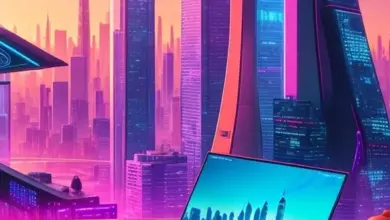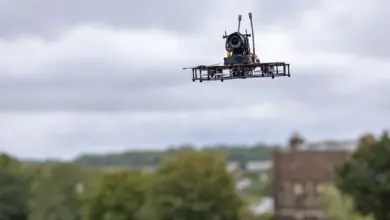
Green technology, also known as sustainable technology, refers to the development and implementation of methods and tools aimed at reducing environmental impact, conserving natural resources, and promoting sustainability. In recent years, there has been a surge of innovation in green technology due to increased awareness of climate change, pollution, and the depletion of natural resources. These innovations play a crucial role in shaping a more sustainable future, helping businesses, governments, and individuals mitigate the negative effects of human activity on the environment.
This article explores some of the most promising innovations in green technology, detailing their contributions to energy conservation, waste reduction, resource management, and environmental protection.
Renewable Energy: Powering the Future Sustainably
Solar Power Advancements
One of the most transformative innovations in green technology has been in the field of renewable energy, particularly solar power. Traditional solar panels, made from silicon, have become more efficient and cost-effective over the years. However, recent innovations like perovskite solar cells are revolutionizing the industry. Perovskite cells are made from a specific material structure that allows them to be cheaper to produce and more efficient at converting sunlight into electricity than traditional silicon cells.
Another advancement in solar technology is solar paint, which contains light-sensitive chemicals that can capture solar energy when applied to surfaces. This technology offers the potential for integrating solar energy into the very fabric of buildings and infrastructure, making energy generation more accessible and widespread.
Wind Energy Innovations
Wind energy has also seen considerable progress. New developments in wind turbine design, such as bladeless turbines and airborne wind energy systems, promise to increase efficiency and reduce environmental impact. Bladeless turbines, for example, reduce the risk to bird populations and can operate in areas with lower wind speeds, making them more versatile. Airborne wind systems, which consist of tethered kites or drones that capture high-altitude winds, can generate more energy compared to traditional ground-based turbines.
Floating wind farms are another major innovation, allowing for the expansion of wind energy production into deeper offshore areas where winds are stronger and more consistent. By installing turbines on floating platforms anchored to the seabed, these farms can harness wind energy in places that were previously inaccessible.
Energy Storage Solutions
The success of renewable energy is closely tied to advancements in energy storage. Solar and wind energy are intermittent by nature, depending on weather conditions and time of day. Innovations in energy storage technology, such as solid-state batteries and large-scale energy storage systems, are addressing this challenge.
Solid-state batteries offer several advantages over traditional lithium-ion batteries, including higher energy density, faster charging times, and improved safety. Additionally, new developments in flow batteries, which store energy in liquid form, enable the storage of renewable energy at a large scale, making renewable energy more reliable and versatile.
Green Building Technologies: Sustainable Construction
Energy-Efficient Materials
The construction industry is a significant contributor to global carbon emissions, but innovations in green building technology are changing that. One of the key trends is the use of energy-efficient materials such as aerogels and smart glass. Aerogels, which are lightweight and highly insulative materials, are being used in buildings to reduce heating and cooling demands. Smart glass, which can change its properties based on sunlight exposure, helps regulate indoor temperatures and reduces the need for air conditioning or heating.
Green Roofs and Vertical Gardens
Green roofs and vertical gardens are transforming urban spaces into greener, more sustainable environments. These technologies involve growing vegetation on rooftops or building walls, which can reduce the urban heat island effect, improve air quality, and provide insulation for buildings. Additionally, green roofs help manage stormwater runoff, reducing the risk of flooding in densely populated areas.
3D-Printed Buildings
Another exciting development is the use of 3D printing technology to construct buildings. 3D-printed buildings use fewer materials, produce less waste, and can be built more quickly compared to traditional construction methods. Furthermore, some 3D-printed structures are designed to be energy-efficient, incorporating features such as passive heating and cooling systems. By minimizing waste and reducing energy consumption, 3D-printed buildings are setting new standards for sustainable construction.
Circular Economy: Reducing Waste and Promoting Recycling
Zero-Waste Manufacturing
The concept of a circular economy revolves around reducing waste, reusing materials, and recycling products at the end of their lifecycle. One notable innovation in this area is zero-waste manufacturing, where companies design products in a way that eliminates waste throughout the production process. By using sustainable materials and creating closed-loop systems, manufacturers can minimize their environmental footprint.
Plastic Recycling and Biodegradable Plastics
Plastic pollution is a major environmental challenge, but new technologies in plastic recycling are making strides toward addressing the issue. Advanced chemical recycling processes can break down plastics into their basic components, allowing them to be reused in the production of new materials. Unlike traditional mechanical recycling, which degrades plastic quality over time, chemical recycling maintains the integrity of the material.
In addition, the development of biodegradable plastics is helping to reduce plastic waste. These materials, made from renewable sources such as cornstarch, break down naturally over time and do not contribute to the accumulation of plastic in landfills and oceans.
Waste-to-Energy Systems
Innovations in waste-to-energy technology are turning municipal solid waste into a valuable energy source. Modern waste-to-energy plants use advanced thermal processes, such as pyrolysis and gasification, to convert waste into electricity, heat, or fuel. These systems not only reduce the amount of waste sent to landfills but also provide a renewable source of energy.
Transportation: Moving Towards Cleaner Mobility
Electric Vehicles (EVs)
Electric vehicles (EVs) are a critical component of green technology in the transportation sector. Advances in EV technology, including improved battery performance and increased driving range, are making electric cars more accessible and affordable. Companies like Tesla, Rivian, and Nissan are leading the way in producing high-performance EVs that compete with traditional gasoline-powered vehicles in terms of speed, range, and cost.
Another key innovation in the EV industry is the development of wireless charging systems. These systems allow electric vehicles to charge without the need for physical plugs, improving convenience and making it easier for EVs to become mainstream.
Hydrogen-Powered Vehicles
Hydrogen fuel cell vehicles (FCVs) are another promising green technology innovation. These vehicles use hydrogen gas to produce electricity, emitting only water vapor as a byproduct. Hydrogen-powered vehicles offer several advantages over electric vehicles, such as faster refueling times and longer driving ranges. However, the infrastructure for hydrogen refueling stations is still underdeveloped, which poses a challenge to widespread adoption.
Sustainable Public Transportation
Innovations in public transportation are also contributing to a greener future. Cities around the world are investing in electric buses, trams, and trains that reduce carbon emissions and improve air quality. Additionally, the rise of micro-mobility solutions, such as electric scooters and bikes, is providing alternative, eco-friendly modes of transportation for short distances.
Agriculture and Food Production: Feeding the World Sustainably
Vertical Farming
Vertical farming is an innovative approach to food production that involves growing crops in stacked layers or vertically inclined surfaces. This method uses significantly less water and land compared to traditional farming and can be implemented in urban areas, reducing the need for long-distance transportation of food. By using controlled environments and advanced technologies such as hydroponics and aeroponics, vertical farming enables year-round food production while minimizing environmental impact.
Lab-Grown Meat
Lab-grown meat, also known as cultured meat, is another groundbreaking innovation in sustainable food production. This technology involves growing animal cells in a lab to produce meat without the need for traditional livestock farming. Cultured meat requires fewer resources, such as land and water, and generates fewer greenhouse gas emissions compared to conventional meat production. While still in its early stages, lab-grown meat has the potential to revolutionize the global food system and reduce the environmental impact of meat consumption.




